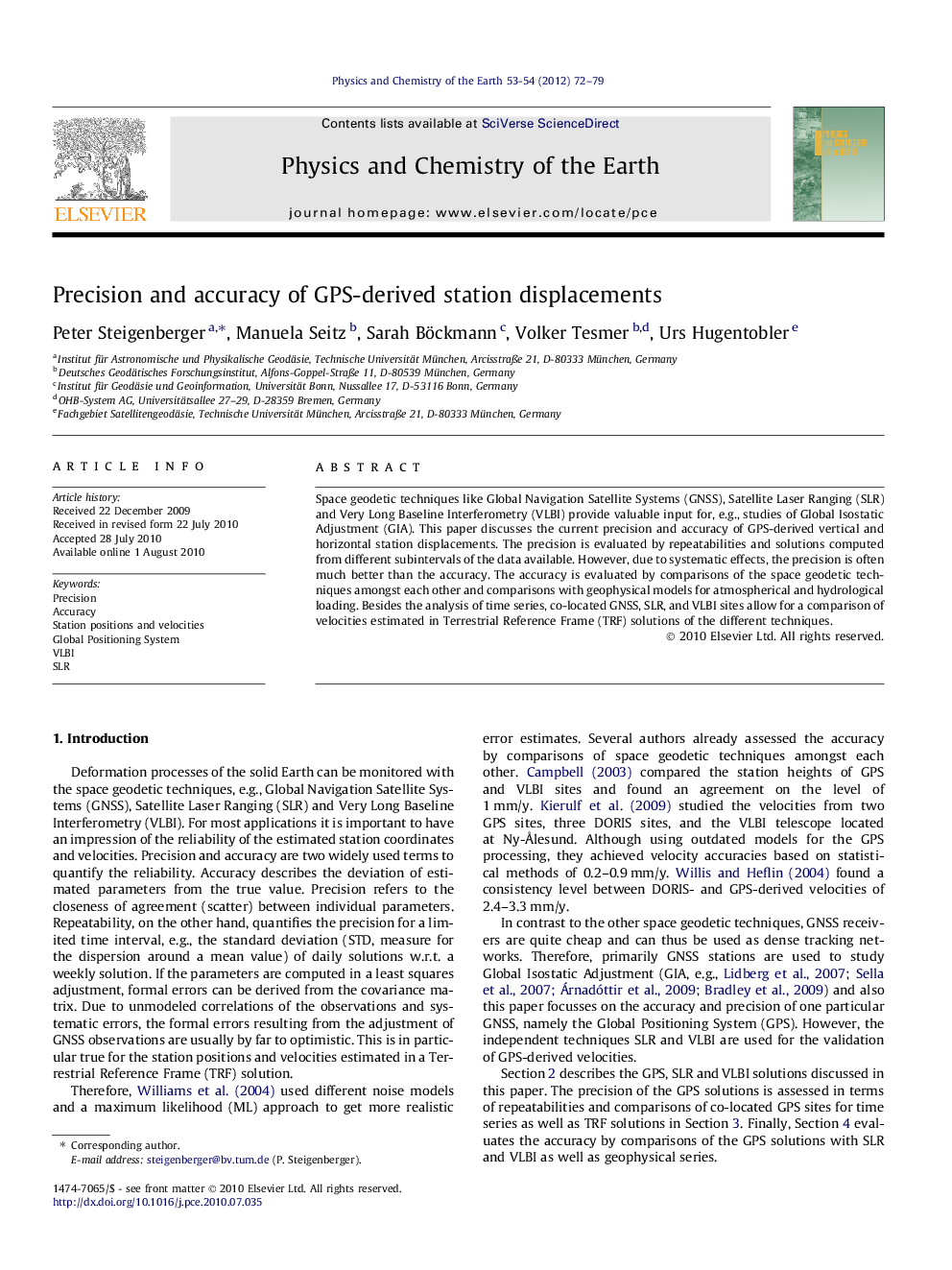| Article ID | Journal | Published Year | Pages | File Type |
|---|---|---|---|---|
| 4721085 | Physics and Chemistry of the Earth, Parts A/B/C | 2012 | 8 Pages |
Space geodetic techniques like Global Navigation Satellite Systems (GNSS), Satellite Laser Ranging (SLR) and Very Long Baseline Interferometry (VLBI) provide valuable input for, e.g., studies of Global Isostatic Adjustment (GIA). This paper discusses the current precision and accuracy of GPS-derived vertical and horizontal station displacements. The precision is evaluated by repeatabilities and solutions computed from different subintervals of the data available. However, due to systematic effects, the precision is often much better than the accuracy. The accuracy is evaluated by comparisons of the space geodetic techniques amongst each other and comparisons with geophysical models for atmospherical and hydrological loading. Besides the analysis of time series, co-located GNSS, SLR, and VLBI sites allow for a comparison of velocities estimated in Terrestrial Reference Frame (TRF) solutions of the different techniques.
